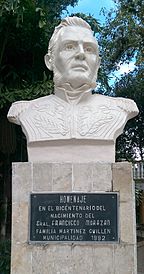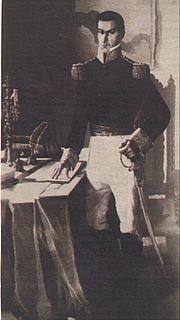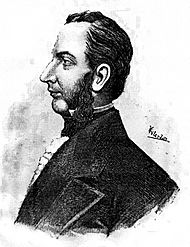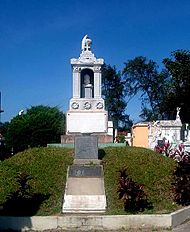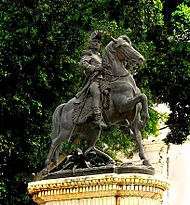Francisco Morazán facts for kids
Quick facts for kids
Francisco Morazán
|
|
|---|---|
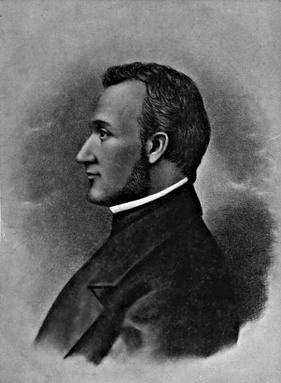 |
|
| 2nd President of Central America | |
| In office 14 February 1835 – 1 February 1839 |
|
| Preceded by | José Gregorio Salazar |
| Succeeded by | Diego Vigil |
| In office 16 September 1830 – 16 September 1834 |
|
| Preceded by | José Francisco Barrundia |
| Succeeded by | José Gregorio Salazar |
| In office 14 June 1829 – 25 June 1829 Acting |
|
| Preceded by | Mariano Beltranena y Llano |
| Succeeded by | José Francisco Barrundia |
| Head of State of Costa Rica | |
| In office April 1842 – September 1842 |
|
| Preceded by | Braulio Carrillo Colina |
| Succeeded by | Antonio Pinto |
| Head of State of El Salvador | |
| In office 11 July 1839 – 16 February 1840 |
|
| Preceded by | Antonio José Cañas |
| Succeeded by | José María Silva |
| Head of State of Honduras | |
| In office 26 November 1827 – 30 June 1828 Provisional |
|
| Preceded by | Miguel Eusebio Bustamante |
| Succeeded by | Diego Vigil Cocaña |
| In office 2 December 1829 – 24 December 1829 |
|
| Preceded by | Diego Vigil Cocaña |
| Succeeded by | Juan Ángel Arias |
| In office 22 April 1830 – 28 July 1830 |
|
| Preceded by | Juan Ángel Arias |
| Succeeded by | José Santos del Valle |
| Personal details | |
| Born | October 3, 1792 Tegucigalpa, Guatemala, New Spain (now Honduras) |
| Died | September 15, 1842 (aged 49) San José, Costa Rica |
| Political party | Liberal Party |
| Spouse | María Josefa Lastiri |
| Occupation | General, lawyer, statesman |
| Signature |  |
José Francisco Morazán Quesada (born October 3, 1792 – September 15, 1842) was an important Central American leader. He was a general and politician who wanted to unite Central America into one strong nation. From 1830 to 1839, he served as the president of the Federal Republic of Central America.
Before becoming president of Central America, Morazán was the head of state for Honduras. He became famous after winning the Battle of La Trinidad on November 11, 1827. For many years, he was a key figure in Central American politics and military actions until his death in 1842.
Morazán was known for his forward-thinking ideas. He introduced many liberal reforms in the new Federal Republic of Central America. These changes included freedom of the press, freedom of speech, and freedom of religion. He also reduced the power of the church by making marriage a civil act and ending government support for tithing (giving a part of one's income to the church).
These reforms created powerful enemies for Morazán. His time in power was filled with conflicts between liberals (who supported his changes) and conservatives (who wanted to keep old traditions). Despite these challenges, Morazán's military skills helped him stay in power until 1837. At that time, the Federal Republic began to break apart. Conservative leaders, led by Rafael Carrera, used this opportunity to divide Central America into five separate nations.
Contents
Early Life and Learning
Growing Up in Honduras
José Francisco Morazán Quesada was born on October 3, 1792, in Tegucigalpa. This city is now the capital of Honduras, but back then it was part of the Captaincy General of Guatemala under Spanish rule. His parents, Eusebio Morazán Alemán and Guadalupe Quesada Borjas, came from a well-known family involved in trade and farming. His grandfather, Juan Bautista Morazán, was an immigrant from Corsica.
Morazán mostly taught himself. Historian Ramon Rosa noted that Honduras didn't have good schools when Morazán was young. So, he had to learn in private schools that weren't well organized. In 1804, when he was twelve, his parents sent him to a Catholic school in San Francisco. There, he learned to read, write, and study math and drawing.
In 1808, Morazán and his family moved to Morocelí to work on family land. Young José Francisco also helped the town's mayor with office duties. In 1813, the family returned to Tegucigalpa. There, his father arranged for him to study with Leon Vasquez, who taught him about civil law and legal procedures.
Francisco Morazán also had access to a library. He learned French, which allowed him to read important works by thinkers like Montesquieu and Jean-Jacques Rousseau. He also studied the French Revolution, European history, and the lives of ancient Greek and Roman leaders. This dedication helped him become a respected person in his hometown. He even represented people in colonial courts.
Marriage and Family Life
Francisco Morazán married María Josefa Lastiri on December 30, 1825, in Comayagua. They had one daughter, Adela Morazán Lastiri, who was born in San Salvador in 1838. María Josefa came from one of the richest families in Honduras. Her father was a Spanish trader, and her mother was from a powerful local family.
María Josefa was a widow with four children when she married Morazán. She inherited a large fortune from her first husband. This wealth and her influential friends helped Morazán with his business, political, and military goals.
Morazán also had a son outside of his marriage, Francisco Morazán Moncada, born on October 4, 1827. His mother was Francisca Moncada. Francisco Morazán Junior lived with his father and stepmother. He traveled with his father to different countries and was with him in Costa Rica when his father was executed. After his father's death, he became a farmer in Nicaragua.
Morazán also had an adopted son, José Antonio Ruiz. José Antonio joined his adoptive father in military actions and became a brigadier general.
Starting a Political and Military Career
After the Captaincy General of Guatemala (which included Honduras) became independent from Spain on September 15, 1821, Francisco Morazán became active in politics. He worked in Tegucigalpa's City Hall as a deputy mayor and public defender. This work helped him understand how public administration worked and the challenges people faced after colonial rule.
In November 1821, a group in Guatemala City discussed forming a new government. General Agustín de Iturbide of Mexico suggested that the Captaincy join the First Mexican Empire. This idea caused disagreements in Central America. Some cities supported joining Mexico, while others opposed it. In Honduras, Comayagua supported the idea, but Tegucigalpa strongly opposed it. The governor of Comayagua, José Tinoco de Contreras, took harsh actions against Tegucigalpa.
To defend their independence, volunteers in Tegucigalpa formed an army. Francisco Morazán joined as a volunteer and was made a captain. This was the start of his military career and his fight against conservative groups.
Tegucigalpa eventually recognized the annexation to Mexico in August 1822. However, the Mexican Empire soon collapsed. The Federal Republic of Central America was created on April 1, 1823. That same year, Morazán was appointed to a commission to study the new Federation. A year later, his uncle, Dionisio de Herrera, was elected Head of State in Honduras. On September 28, 1824, Herrera appointed Morazán as his secretary general.
The Federal Republic of Central America
The Central American Federation existed from 1824 to 1838. It included Costa Rica, Guatemala, Honduras, Nicaragua, and El Salvador. These areas were united under Spanish rule. They gained independence in 1821 and were briefly part of the Mexican Empire in 1822. On July 1, 1823, they became independent again and formed a loose federal state.
In 1824, the Constituent Congress met in Guatemala City to decide on a government system. Two main ideas emerged:
- Liberals wanted a federalist government, like the United States. This system would give each state a lot of freedom to make its own laws and reforms, while still being part of a larger federal government.
- Conservatives wanted a centralist government. In this system, one central government would make all decisions and laws for all states.
The Liberals won the debate, and the federalist system was chosen. On November 22, 1824, the new constitution was approved. The nation was named the Federal Republic of Central America, and Manuel José Arce became its first president.
Morazán's Rise to Power
The Battle of La Trinidad
In 1826, the Federal Government, led by President Manuel José Arce, tried to change the federal congress. This was seen as unconstitutional by the Honduran head of state, Dionisio de Herrera. President Arce did not recognize Herrera's authority. Arce sent Colonel Justo Milla to remove Herrera from power. On April 9, 1827, Milla's troops captured Comayagua, the capital, and sent Herrera to a prison in Guatemala.
Morazán managed to escape from the federal troops. He went to Tegucigalpa to gather more fighters. On his way back, his men fought with Milla's forces. Morazán was later captured but escaped again. He traveled to El Salvador and then Nicaragua, seeking military support. In Nicaragua, he met José Anacleto "Cleto" Ordóñez, who gave him weapons and 135 men. Troops from El Salvador and Honduran volunteers also joined Morazán.
When Justo Milla learned Morazán was in southern Honduras, he moved his troops to Tegucigalpa. Morazán headed towards Sabanagrande. On November 11, Morazán faced General Milla in the important Battle of La Trinidad. After five hours of intense fighting, Morazán's forces crushed Milla's federal troops. Milla and a few officers escaped. After this victory, Morazán marched to Comayagua and was declared Honduras' new Chief of State.
The Central American Civil War
After his victory at La Trinidad, Morazán became a key leader of the liberal movement. His military skills were recognized across Central America. Liberals in El Salvador asked for his help. They were unhappy with the new government officials chosen by President Arce. El Salvador tried to take over the federal government by force, but President Arce defeated their army. He then ordered 2,000 federal troops to occupy El Salvador, starting the civil war.
Francisco Morazán accepted the challenge. He appointed Diego Vigil as Honduras's new head of state and went to Texiguat to prepare for the campaign in El Salvador. In April 1828, Morazán led 1,400 men into El Salvador. This group, called the "Army Protector of the Law," included Hondurans, Nicaraguans, and Salvadorans. Some were driven by liberal beliefs, others by loyalty to a political leader, and some hoped for rewards after the war.
While the Salvadoran army fought federal forces in San Salvador, Morazán fought in the eastern part of the state. On July 6, he defeated Federal troops at the 'El Gualcho' ranch. Morazán continued fighting around San Miguel, defeating every federal group sent against him. General Arzu, the federal commander, left San Salvador to deal with Morazán personally.
Morazán went to Honduras to recruit more troops. When Arzu learned his forces had surrendered elsewhere, he returned to Guatemala. His remaining troops were intercepted by Morazán's men. On October 9, they were forced to surrender. With this victory, El Salvador was free from federal troops. On October 23, Morazán entered San Salvador triumphantly. He then prepared his army to invade Guatemala.
Invading Guatemala
In Ahuachapán, Morazán worked to build a large army. He asked El Salvador for 4,000 men but received 2,000. In early 1829, he sent a group into Guatemala. They took control of Chiquimula. Morazán then placed a small force near Guatemala City to draw out the enemy. Federal troops left the city to attack this small force, but Morazán's main army then defeated them.
The people of Antigua also rose up against the Guatemalan government and asked Morazán for protection. This led Morazán to invade Guatemala with his 'Protector Army'. His men set up camp near the capital. Fighting began around the city's defenses. After some battles, Morazán moved his forces to Antigua. Federal troops followed him, but Morazán defeated them in a smaller battle, boosting his army's morale.
More Guatemalan volunteers joined Morazán's army. On March 15, Morazán defeated another federal army. He then moved to surround Guatemala City again. After more fighting, Guatemala's Chief of State, Mariano Aycinena, surrendered on April 12. The next day, Morazán's troops occupied the main plaza. President Arce and other officials involved in the war were imprisoned. Morazán then led the country until Juan Barrundia took over on June 25, 1829.
Morazán's Presidency
First Term: Leading Reforms (1830–1834)
Francisco Morazán won the presidential election in 1830 against José del Valle. He became president on September 16. In his speech, he promised to uphold the Federal Constitution.
With Morazán as president and his supporters as governors, the Liberals gained strong control. Morazán began his liberal reforms. He wanted to remove old Spanish ways and create a society with general education, religious freedom, and equality. In 1831, Morazán and Governor Mariano Galvez used Guatemala to test these new ideas. They built schools and roads, allowed free trade, and invited foreign businesses and immigrants. They also allowed civil marriage and divorce, and freedom of speech. They tried to make public land available for farming. Most importantly, they separated the church from the state, ended tithes, allowed religious freedom, and took control of education from the church.
These new laws greatly affected the wealthy families in Guatemala. They especially reduced the power and privileges of the Spanish clergy. Many church leaders were against Morazán and the Liberal Party. They had opposed independence and the reforms, especially those about public education. Morazán had to expel some church leaders from the country because they were suspected of working against the government.
In March 1832, another conflict started in El Salvador. Its leader, José María Cornejo, rebelled against some federal laws. President Morazán led the Federal Troops to El Salvador and defeated Cornejo's army on March 14. By March 28, Morazán had taken San Salvador. After this, people began talking about the need to change the constitution.
Second Term: Continued Challenges (1834–1838)
In 1834, Morazán moved the capital city first to Sonsonate and then to San Salvador. His first four-year term as president ended. New elections were held. José del Valle ran against Morazán. Morazán temporarily gave the presidency to General Gregorio Salazar so the election could be fair.
José del Valle won the election, showing that many people opposed the liberal reforms. However, Valle died before he could take office. Most historians believe he might have brought peace between the Liberals and Conservatives. On June 2, the Federal Congress called for new elections, which Francisco Morazán won. On February 14, 1835, General Morazán began his second term as president.
The End of the Federation
In February 1837, events began that led to the collapse of the Federation. A cholera epidemic hit Guatemala, killing many people, especially the poor and indigenous people. At the same time, indigenous people in one district were upset about a new jury trial system that they didn't understand.
Local priests used the epidemic to turn people against the liberal government of Mariano Galvez. They spread rumors that the government had poisoned rivers to wipe out the indigenous population and replace them with foreigners. They pointed to a recent land grant to a British company as proof. The angry indigenous people took up arms, killed white people and liberals, and burned houses.
The government sent an army, but their harsh actions made things worse. By June, a revolt began in Santa Rosa. A young man named Rafael Carrera, an illiterate but clever swineherd, became the rebels' leader. Priests told the natives that Carrera was a "protecting angel" sent to punish liberals and foreigners and restore their old ways. They even claimed a letter from the Virgin Mary told Carrera to lead the revolt.
With cries of "Long live religion!" and "Death to foreigners!", Carrera and his forces started a war against the government. Conservatives joined them. The liberal government asked General Morazán for help. Francisco Morazán repeatedly defeated Carrera's forces and brought peace to the state. However, he could never capture Carrera, who would retreat to the mountains and return as soon as Morazán's troops left.
By 1838, Morazán was leading a failing Federation. Governor Galvez had given up power. Congress tried to save the Federal Government by giving it control of customs money. But Honduras, Nicaragua, and Costa Rica opposed this and used it as an excuse to leave the union. The Federation was dead. On February 1, 1839, Morazán's second term ended. There was no legal way to name a successor. The Federation failed due to a lack of compromise, the power of the church, conflicts between liberals and conservatives, and leaders seeking personal power.
Head of State of El Salvador
After his second term as President of the Federal Republic ended, Francisco Morazán lost his political and military power. However, on July 13, 1839, he was elected Chief of State of El Salvador.
When Rafael Carrera and the Guatemalan conservatives heard about Morazán's new role, they declared war on El Salvador. They saw Morazán as the symbol of the 'Old Federation' and wanted to defeat him. On July 24, Guatemala and Nicaragua formed an alliance against Morazán's government. Carrera tried to get the Salvadoran people to rebel, but Morazán quickly stopped these small uprisings.
When Carrera's plan failed, Morazán's enemies formed an army of Nicaraguan and Honduran troops. On September 25, 1839, these forces invaded El Salvador. Morazán's army faced them at the battle of San Pedro Perulapán. Morazán, with only 600 Salvadorans, defeated 2,000 men led by generals Francisco Ferrera and others. The defeated generals and their troops fled, leaving many dead.
Morazán's Defeat
On March 18, 1840, Morazán made a final attempt to restore the 'Union'. He gathered what he believed were enough Salvadoran forces and marched to Guatemala. He attacked the capital from the south. Carrera pulled most of his forces out of the capital, leaving only a small, visible group inside. Morazán attacked this small group, but then Carrera's main force of about 5,000 men attacked him from all directions.
The battle was very fierce. Carrera's indigenous soldiers shouted "Long Live Carrera!" and "Death to Morazán!" By the next morning, Morazán was running out of ammunition. He ordered his men to fire heavily from three sides of the plaza to distract the enemy. He then slipped out through the fourth side with a small group to escape back to El Salvador.
This time, Morazán did not have the support of the common people as he did in 1830. His 'Liberal reforms' had not brought enough benefits to the citizens, and some people disliked the changes, like the new tax system. Even some former liberal allies, like José Francisco Barrundia, had joined Rafael Carrera. Morazán's defeat was so complete that on March 27, he gave up his leadership in El Salvador. He did not want to cause any more problems for the Salvadorans. With Francisco Morazán's final defeat, the hope of a Central American federation disappeared.
Exile and Return
On April 8, 1840, General Francisco Morazán went into exile. He left from the port of La Libertad in El Salvador with about 30 friends and war veterans. He stopped in Costa Rica, where most of his companions found political asylum. Seven continued with him to South America. Morazán landed in Chiriquí Province, then moved to David, Chiriquí, where his family was waiting. While there, he learned about the harsh treatment of his supporters by Rafael Carrea and other Central American leaders. Angered by this, he wrote his famous 'Manifest of David' on July 16, 1841.
In David, Morazán also received calls from his liberal friends in Costa Rica. The governor, Braulio Carrillo, had limited freedoms and declared himself 'Chief of State for Life'. Carrillo also declared Costa Rica an independent state. However, Morazán wanted to stay away from Central American affairs and traveled to Peru. In Lima, he was invited to command a Peruvian army, but he declined. He found the war between Peru, Bolivia, Colombia, and Chile too confusing.
In Peru, Morazán found friends who shared his ideals. Around 1841, the British began to interfere in the Mosquito territory between Honduras and Nicaragua. This made Morazán decide to return to Central America. With financial help, he left Peru in late December 1841. He stopped in Ecuador and Chiriqui to meet his family before returning to Central America.
Return to Central America
On January 15, 1842, Morazán arrived in El Salvador. He offered to help Central American leaders defend against British interference. On February 16, 1842, he told his countrymen that his return was a "duty" for anyone who loved their homeland. However, his offers were rejected.
After this, he planned to overthrow Braulio Carrillo, the leader of Costa Rica. Carrillo had started to separate Costa Rica from Central America.
In La Union, El Salvador, Morazán hired three boats. He traveled to other Salvadoran towns, where he gathered local forces. From Acajutla, he went to the island of Martin Perez, where he organized about 500 men. On April 7, Morazán's fleet landed safely at Port of Caldera in Costa Rica.
When Braulio Carrillo learned Morazán was in Costa Rica, he sent a military force. On April 9, 1842, Morazán issued a statement to the people of Costa Rica. He said he cared about their "misfortunes" and had found a way to save them, even if it cost him his life.
Morazán avoided fighting Carrillo's forces directly. Through talks, he convinced General Vicente Villaseñor to betray his government. They signed "The Jocote Accord." This agreement created a single military force, called for a new assembly, removed Braulio Carrillo, and put Morazán in charge of a temporary government. On April 13, 1842, Morazán's forces entered San José.
Carrillo was forced to accept the agreement after some changes. He then handed the government over to Morazán and left the country. Morazán's first actions were to welcome back political refugees and abolish Carrillo's laws that limited trade and property. He restored individual and political rights and began urgent reforms. He then called for a Constituent Assembly, which appointed him Supreme Chief of Costa Rica.
In the following months, Morazán focused on recruiting soldiers to "restore the Central America motherland." Rumors spread about a possible war against neighboring states. This worried Costa Ricans. They feared Rafael Carrera would interfere in their affairs, especially after Guatemala cut ties with them. They also felt they couldn't afford a war and didn't believe in restoring the 'Union'. For these reasons, they began to plot against Morazán.
Morazán's Death
On September 11, 1842, a popular uprising against Morazán began in San José. Led by Portuguese General António Pinto Soares, 400 men attacked Morazán's guard of 40 Salvadorans. Morazán and his men fought back and retreated to their headquarters. The fighting was bloody, and the number of rebels grew to 1,000, while Morazán's besieged men dwindled. A chaplain offered Morazán a chance to surrender and save his life, but he refused. After 88 hours of fighting, Morazán and his closest allies decided to break through the siege. General José Cabañas held off the rebels with 30 men, allowing others to escape towards Cartago.
But the rebellion had spread to Cartago as well. Morazán sought help from his friend, Pedro Mayorga, but Mayorga betrayed him. Morazán and his generals, Vicente Villaseñor, José Saravia, and José Trinidad Cabañas, were handed over to their enemies. Morazán and Vicente Villaseñor were sentenced to death. On September 15, Morazán and Villaseñor were taken to the central plaza in San José. With Morazán's death, Central America lost a man described by José Martí as "a powerful genius, a strategist, a speaker, a true statesman, perhaps the only one Central America has ever produced." In 1848, Morazán's remains were sent to El Salvador, fulfilling one of his last wishes.
Morazán's Vision and Legacy
Francisco Morazán was a man of action, but he also had big ideas for Central America. He believed in progress and wanted to unite the region. He pushed for revolutionary changes for his time, such as promoting education, encouraging immigration, and establishing freedom of religion and the press. His first federal government aimed to peacefully rebuild the states of the republic.
Even though Liberals gained power, they struggled to unite Central American society. Their fight against the wealthy elite and their desire to exclude conservatives from politics did not include efforts to involve indigenous people, who made up most of the population. Indigenous people did not find the liberal ideas appealing enough to leave the old order taught by the Church, which had provided stability for three centuries under colonial rule.
Some historians believe one of Morazán's biggest mistakes was not breaking up the large landholdings of his enemies. His fight was driven by a romantic ideal to remove the powerful landowners. However, his methods did not always match the political reality. Despite Morazán's efforts as president, the church and wealthy families strongly opposed his liberal ideas. They used the strong beliefs and unhappiness of many people, especially in Guatemala, against him.
Morazán's Lasting Impact
Francisco Morazán became a symbol of the dream for a united Central America. He gave his life trying to keep the 'Union' together, though he was not successful. Today, more than 160 years after his death, Central America still faces challenges. However, the dream of a Great Central American Country is still alive.
Morazán's image can be found on money, logos, and stamps. Institutions, cities, departments, schools, and parks are named after him to honor his memory.
El Salvador was one of the first countries to honor Morazán. On March 14, 1887, the department of "Gotera" was renamed "Morazán" to "perpetuate the name of the great leader of the Central American Union." In 1943, Honduras renamed the Tegucigalpa department to Francisco Morazán. In Guatemala, the town of Tocoy Tzimá became 'Morazán' in 1887. In 1945, Port Morazán was founded in Nicaragua.
Costa Rica, the country where he died, honored him with a park in the center of its capital, San José.
The idea of Central American integration still exists. For example, the Central American Parliament, or "Parlacen," is a political group working to unite the Central American countries. It represents a modern version of the historic Federal Republic of Central America.
Morazán's legacy also appears in the arts. The first recorded play in El Salvador, "The Tragedy of Morazán," tells his life story. The modern period of Honduran theater began with a historical drama honoring Morazán. In his famous book Canto General, Pablo Neruda also dedicated a poem to Morazán and Central America.
Statues and busts of Francisco Morazán can be found in Chile, El Salvador, the United States, Spain, and other places. The most famous is the equestrian (on horseback) statue in Tegucigalpa's Central Park.
The 2017 movie Morazán was Honduras' first submission to the Academy Awards. It shows Morazán's last days. A species of Honduran lizard, Anolis morazani, is also named in his honor.
See also
 In Spanish: Francisco Morazán para niños
In Spanish: Francisco Morazán para niños



